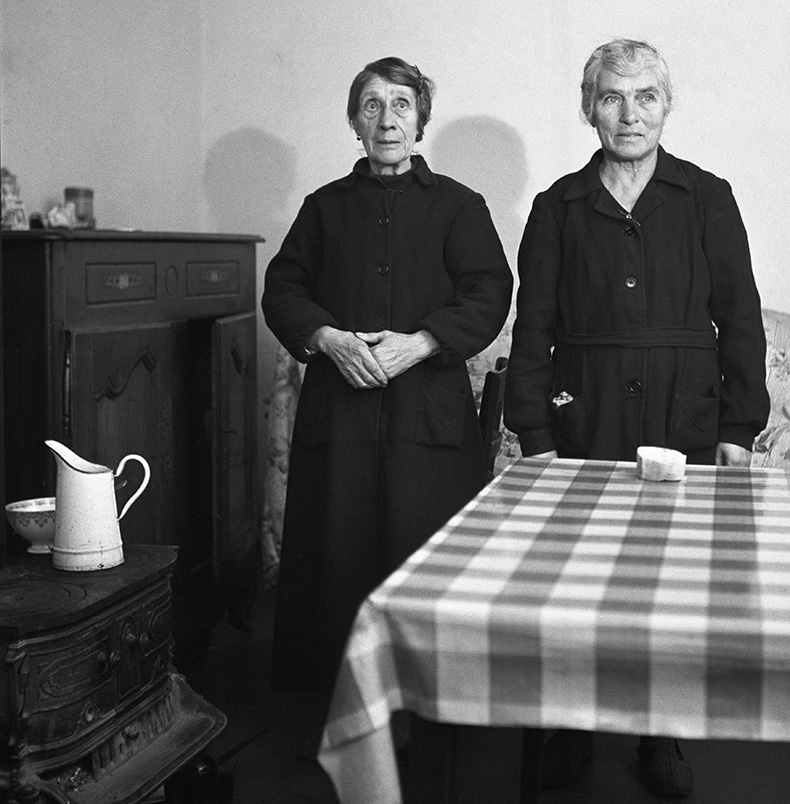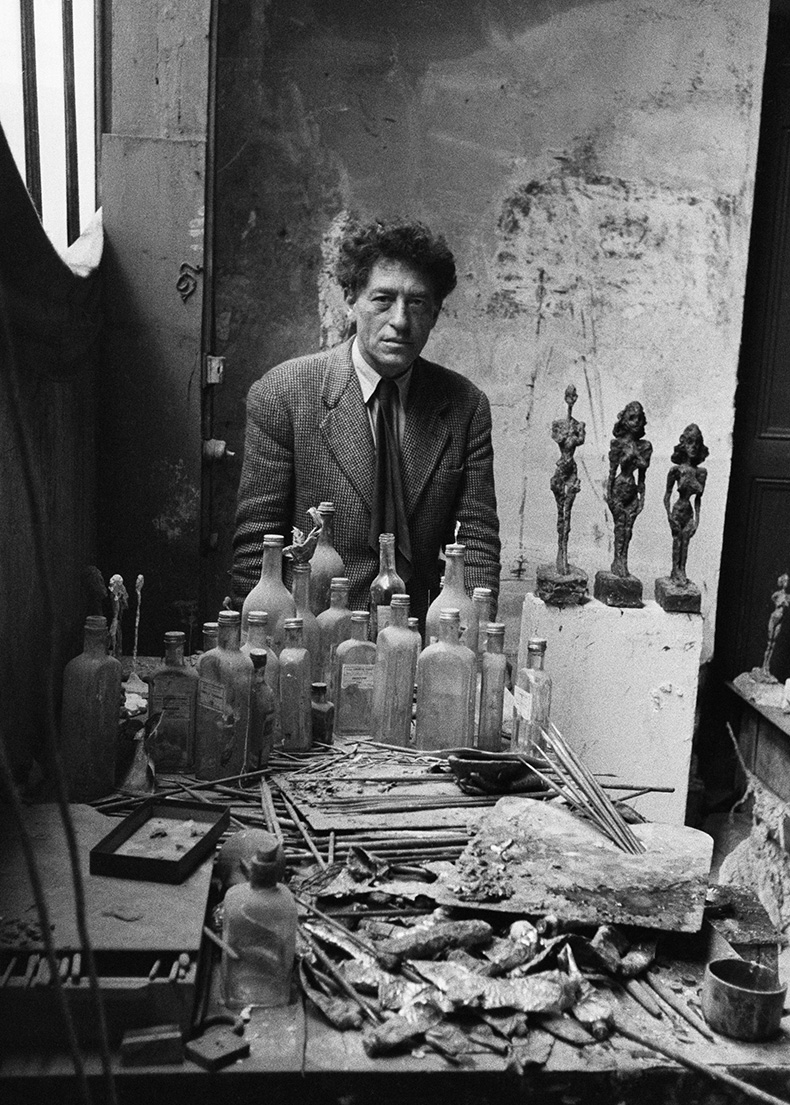‘A photograph, in order to be powerful, must tell us something of the human condition,’ Sabine Weiss once observed, ‘it must make us feel the emotion that the photographer felt facing her subject.’ These confrontations can be found throughout ‘Sabine Weiss: The Poetry of the Instant’ – the largest retrospective of Weiss’s work ever held, and the first in Italy, at Casa dei Tre Oci in Venice. Known as one of the greatest representatives of French humanist photography, along with the likes of Willy Ronis, Edouard Boubat, Brassaï, and Robert Doisneau (who originally recruited Weiss to the famous Rapho agency), Weiss openly shunned categorisation and spent her long and varied career defying expectations, moving between photojournalism, fashion photography and portraiture.
The exhibition, curated by Virginie Chardin, follows these varying strands of Weiss’s oeuvre, giving space to the vast range of photographs on display, while drawing a poignant portrait of the woman who produced them. Her images capture an encounter, immortalising a relationship formed between photographer and subject, however brief. This is most strongly felt in a series of photographs of children with dirtied faces and gap-toothed smiles caught playing in the streets and in Weiss’s unsettling portraits of patients with senile dementia and mental health issues. ‘I like to photograph children and old people,’ Weiss noted, ‘their masks drop more easily.’

Family colony for the mentally ill, Dun sur Auron, France (1951–52), Sabine Weiss. © Sabine Weiss
Weiss’s honest and unflinching gaze earned her a place in the exhibition ‘Postwar European Photography’ at the Museum of Modern Art, New York, in 1953, and in the spring of 1955, she finally visited America – a contact sheet, on display here, illustrates her arrival on the ocean liner Liberté, her head playfully poking out from a blanket. Also included in the exhibition is ‘A Parisienne’s New Yorkers’, a spread of photographs commissioned by the New York Times Magazine, which depicts men hunched against the wall of a building watching a woman walk by, accompanied by Weiss’s written commentary: ‘it seems typically American to pass one’s lunch hour on a sidewalk and watch the fascinating passing scene.’ Meanwhile, in another series commissioned by the magazine she captures pedestrians in Washington, all gazing upwards, the object of their attention hidden beyond the frame. Such works are striking not for the composition, but for the way in which they dissolve the distance between photographer and subject, image and viewer.
While this feels especially striking for documentary-style photography, it has a different effect in Weiss’s more staged compositions. In a room dedicated to her images from the fashion world we find carefully choreographed limbs and silhouettes, a new kind of focus, a sense of concentration. Images reveal themselves as active constructions, but also points of exchange. In her portraits of other creatives this intensity is amplified. We cannot hear Ella Fitzgerald in 1955 Paris, but we are afforded other details: the soft crease of her forehead, her focused gaze, her open mouth. The writer Françoise Sagan looks up bemused from the floor where she lounges with her typewriter, one hand lazily extended towards the keys. A paint-splattered Niki de Saint Phalle warily watches a palette knife clasped in her hand. Alberto Giacometti stares at the camera head-on.

The artist Alberto Giacometti, Paris, France (1955), Sabine Weiss. © Sabine Weiss
It’s in these moments of intimacy that Weiss’s images excel, and the design of the exhibition movingly contextualises their creation with personal paraphernalia: identity cards, original magazine covers, clippings, and negatives, a caricature of Weiss’s head on the body of a camera tripod, an oil painting by her husband, behind-the-scenes images of Weiss at work – reporting or sitting surrounded by piles of prints at her desk. Weiss passed away in December 2021, when preparations for the exhibition were already underway, and yet a vivid sense of the life lived in and around these images persists through this show.
A number of short films offer further insight into the photographer’s art and life. In one she explains with alluring pragmatism how she washed photographs by hand under a communal fountain as her studio-apartment didn’t have running water and worked at night to develop images without the luxury of a dark room, while in another her husband, the painter Hugh Weiss notes the differences between their practices: ‘the photographer sees things outside and responds with the inside of herself.’ Rather than manifesting an internal world, Weiss captures elements of reality to provide access to specific moments of exposure, both of the world and herself.
‘Sabine Weiss: The Poetry of the Instant’ is at Casa dei Tre Oci, Venice, until 23 October.














![Masterpiece [Re]discovery 2022. Photo: Ben Fisher Photography, courtesy of Masterpiece London](http://zephr.apollo-magazine.com/wp-content/uploads/2022/07/MPL2022_4263.jpg)
‘Like landscape, his objects seem to breathe’: Gordon Baldwin (1932–2025)